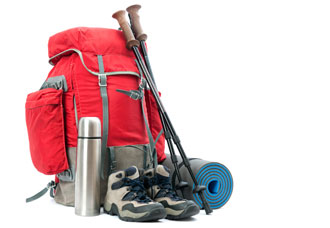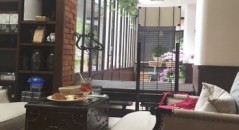
One of the interesting things about moving abroad is the newness of everything–the mundane, everyday tasks we take for granted back home, say dropping off dry cleaning or calling someone to fix a leaky toilet, become these difficult challenges we have to conquer. When we are successful, it’s more than just a starched shirt or a dry bathroom floor; there’s a real sense of accomplishment that such trivial matters would never elicit in our native lands. This feeling may stay with us during our first year and last into our second or beyond. However, when we have lived abroad for five years, ten years, or longer, the newness, of course, tends to wear off. A leaky toilet is little more than an annoyance, and there’s not the same satisfaction when you call the plumber to come round and fix it. We settle into routines, we have jobs and careers, we get married, have kids, make car payments, have mortgages… Life becomes not to dissimilar from what it might be back home, although probably with more Chinese characters it must be said. How, then, can we recapture that newness, that sense of adventure that was so prevalent in our early years abroad (without doing anything too drastic)? The Urban Hiker has the following tale as an example.
One afternoon in May, I finished my work early and decided to walk home from the Liuzhangli neighborhood to my place in Wenshan. Not wanting to walk down Keelung Road and go through Hsin Hai Tunnel on foot (although I have done this years ago), I opted to try going over the mountain (or mountains?) from Linguang–starting in Fuyang Park to be precise. This I hadn’t done before and was planning to navigate the trails and paths of the park by dead reckoning. Basically, keep going “left” if possible, and then go “right” at some point. I knew that there was a hiking trail that came out near the mouth of the tunnel, and with a little luck, maybe I could end up there.
Arriving at the park, I began surveying the signage and didn’t see any indication of the tunnel or landmark near my destination. This may have been a sign to do some planning before undertaking the hike, but what was the worst that could happen? I had water, my phone, and a few hours of daylight, and I was in Taipei, so I started off. Before I got too far into my journey, however, an old guy with a broom pole approached and asked me if I needed any help. This is another thing that happens infrequently after you’ve settled into your routine–as your rarely look lost or uncertain like you did in your salad days abroad. I told him that I wanted to go to Hsin Hai Road Section 4 and was unsure whether there was a way to do it. He immediately told me he’d show me the way. I protested, saying I didn’t want to bother him, but it wasn’t any bother, he insisted. So we started climbing up.
Truth be told, it wasn’t easy going–there were some steps but most of the path was rocks and wasn’t clearly marked. It became clear early on that we were embarking on one of the less trodden paths of Fuyang. It was also clear to me that I wouldn’t have stood a chance navigating the way on my own. My guide was doing well for an older gentleman, using his broom pole as a walking stick, and he told me he hiked those trails every day. I was impressed, but then I am used to seeing septuagenarians here tackle urban hikes with little trouble. What was more impressive was that he told me he had Parkinson’s. I could detect a bit of a stutter in his speech, but his footing was for the most part steady and true, so I assumed the disease was in its early stages. I asked if he wanted to stop and rest but he was doing OK and up we climbed, over one summit and then another, the din of the city below replaced by the quiet breeze through the trees and buzzing bugs all around us.
We hiked for about an hour, going left as much as right–mountain paths seldom are direct–and I could make out some landmarks but was not used to seeing them from atop the mountain. It was a tad disorienting. There were moments when the landmarks would disappear and I was convinced we were lost, but then I would make out Wanfang Hospital up ahead through the trees. Eventually, we made it down the other side and came out on Hsin Hai Section 4, right past the mouth of the tunnel. My guide said that he’d take the MRT home and I offered to buy him a drink as thanks for leading the way over the mountain, but he refused several times. It would have been better to have brought a tea set and brewed some tea on top of the mountain I guess. Next time. I thanked him for guiding me and the pleasant conversation. He told me his name was Frank and I told him I hoped to meet him again one day. After watching Frank enter the station, I continued on down Hsin Hai toward home, thinking about my adventure, the kindness of some Taiwanese you meet, and how, even after a decade, you can still enjoy the newness of this place.



